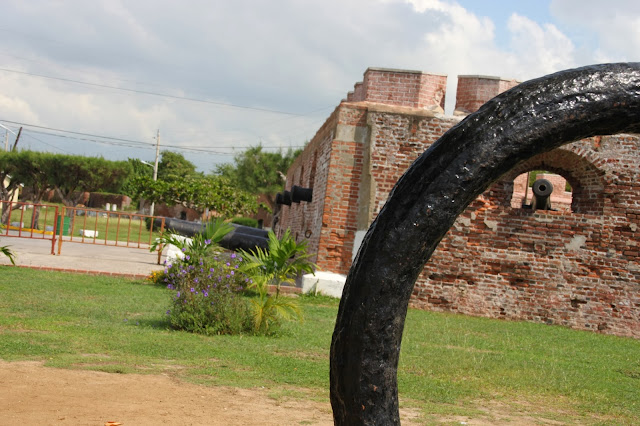Port Royal: fortified heritage
“This is when the earthquake struck,” Captain Peter Gordon said, pointing at an artist’s rendition of 1692 earthquake at Port Royal capturing the chaos, destruction and the high waves that started to engulf the city.
A tsunami of thoughts and scenes hit one’s mind, a flashback from the now quiet, serene façade of Fort Charles to an era where fables surrounding Port Royal, labelled as ‘wickedest’ place on earth, where one-eyed, one-legged pirates roamed, rum and silver flowed as freely as the waves of the Caribbean Sea surrounding it, romanticised notoriety in all its glory.
Preserved in Fort Charles, Port Royal, are the remains and artefacts, which were excavated from the ruins, a collection that stands as a testimony to the richest city in the western hemisphere.
The National Museum Jamaica-operated museum, housed in the fort, showcases items, which weaved those intriguing tales, and most of the items preserved in the glass showcases, speak of the vibrancy and diversity of this city from Indonesian Chinaware, Jewish prayer lamp, to a dagger (katar), which originates from India.
One would be mystified, awed and intrigued to find glimpses of the world civilisations in this, now-laid-back and sleepy Fort Charles.
The red-bricked asymmetrical fortification, once stood guard, warding off intruders and intimidating them with a battery of high-calibre guns, that were strategically mounted in the periphery.
The fort and the town were inseparably linked.
“Their (Fort Charles and Port Royal) rise and fall were influenced by a number of historical events,” explained Gordon, curatoral assistant at the museum and a Port Royal resident. “They included the rise of piracy, the Imperial trade routes, international relationships and natural disasters.”
During the second half of the 17th Century, Port Royal was transformed into one of the most important transshipment points in the New World. According to historians, it was also a cultural Mecca, surpassing Boston and other major New World cities.
“By 1692, Port Royal had the dubious distinction of being known as the richest but also “the wickedest” city in the world,” said Gordon.
But Port Royal went through a metamorphosis, to be engulfed by wars and countless disasters - hurricanes that struck in 1712 and 1751, epidemics, earthquakes of 1692 and 1907 and fires in 1704.
“The 1692 earthquake sent over 13 acres of city underwater,” said Jonathan Greenland, director, National Museum of Jamaica, Institute of Jamaica. “The tragedy makes the area a ‘time capsule’ of human behaviour in the 17th Century, which is sealed below the ocean floor.
“Port Royal’s importance to heritage education and tourism is enormous,” Greenland added.
“The town is an archaeological treasure trove and has a lot of potential and importance for marine and historical archaeology.”
As, historically, Fort Charles and Port Royal were intertwined, it is also critical to integrate and incorporate the community in the visitors’ experience.
“It would be nice if the people visiting here (Fort Charles) could also take a tour of the community,” Sophia McDonald of Jamaica National Heritage Trust (JNHT), and a long time resident of Port Royal, said.
“The community needs to be more involved and educated.”
The antiquities housed in Fort Charles museum were excavated from the sunken city, which, Gordon informed were just ‘tip of the iceberg’.
“What you see here (in the museum), is just a part of a collection we have stored away,” he said. “If we have more space, we can put them for public display.”
and when all the wars are over, a butterfly will still be beautiful, says Indian author Ruskin Bond ... the cannons at Fort Charles have been long silenced and the glory of the heydays meanders in the butterflies of imagination that can perceive what a magnificent city Port Royal would have been.









Comments
Post a Comment